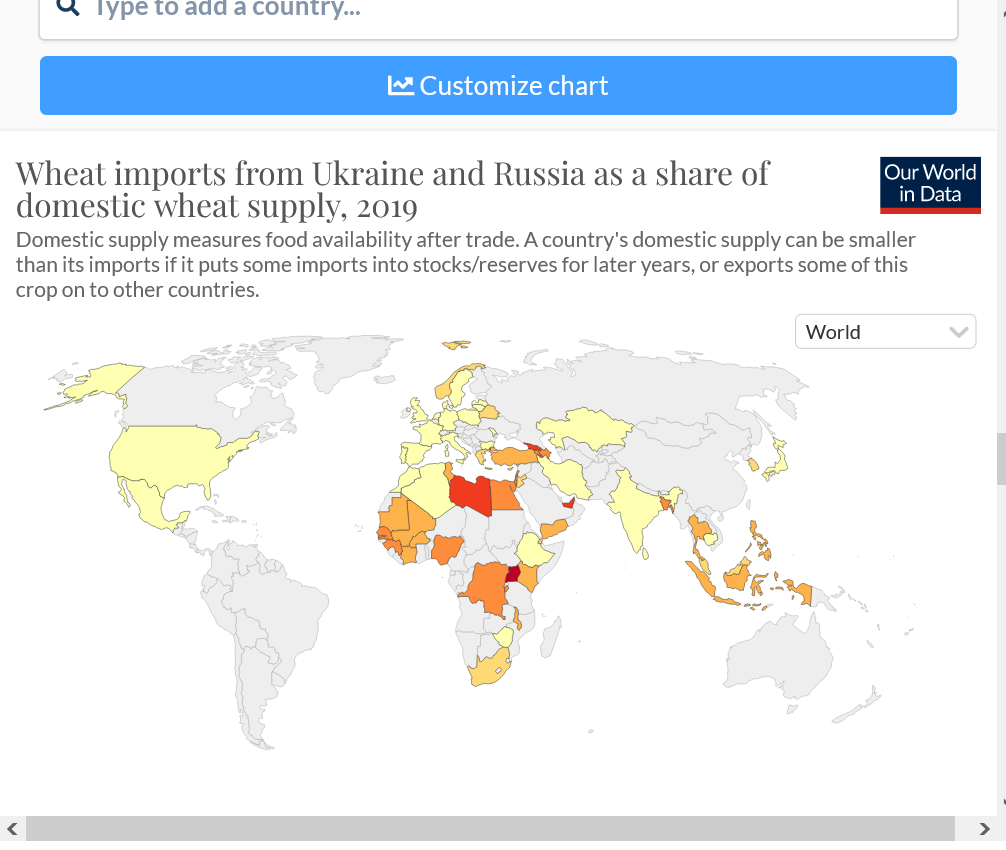
One of the most informative articles about food in the US on the interet!
"Here are 40 maps, charts, and graphs that show where our food comes from and how we eat it, with some drinking thrown in for good measure"
![]()
Agriculture
Wealthy countries buy meat and livestock feed; poor countries get staples, and less than they used to.
++++++++++++++++++++++++++
https://www.ewg.org/research/feeding-world
The United Nations has forecast
that world food production must double to feed 9 billion people by 2050. That assertion has become a relentless talking point in the growing debate over the environmental, health and social consequences of American agriculture.
America’s farmers, we are told, must double their production of meat products and grains to “feed the world.” Otherwise, people will go hungry.
Agribusinesses such as Monsanto sometimes cite the so-called “moral imperative” to feed a hungry world in order to defend the status-quo farm policy and deflect attention from the destruction that “modern” agriculture is inflicting on the environment and human health.
The real experts know better. Jose Graziano da Silva, director-general of the U.N.’s Food and Agriculture Organization argues instead
that the current conditions of “modern” agriculture are “no longer acceptable.”
The key to ending world hunger while protecting the environment is to help small farmers in the developing world increase their productivity and income, and to promote “agro-ecology” everywhere, including in the U.S.
Poverty is the root cause of hunger, not too few exports of U.S. wheat, corn, soybeans and meat. American exports go to people who can afford to buy them."
"Even the hungriest countries produce most of their own food. Overall, in 2013, American farmers contributed only 2.3 percent of the food supply for the 19 most undernourished countries through food exports and aid.
We won’t end world hunger by doubling production in the United States while putting our nation’s environment and health at risk. We can and must help end world hunger by helping people in the hungriest countries do a better job of feeding themselves and ensuring that their farmers make a good living.
Reducing poverty, increasing income for women, providing nutrition education, improving infrastructure like roads and markets to increase access to food, and ceasing wars and conflict could all help undernourished populations better feed themselves."
Most people would agree that countries need to grow their own food. Very few countries can not grow enough food but there are some
Those countries need to explore other production of needed products the world wants to sell goods and use the money to buy food
However I would put war and conflict at the top of the list of why many poor countries can not feed them selves
2nd would be access to enough water to grow food
IMHO war and conflict will continue thus we will have hungry people, who can not access water, produce other goods to earn money or grow food
A good example is Ukraine which most people are aware of
Ukraine may not be able to feed them selves
If Ukraine fails to grow food then what chance do many lesser countries have to avoid destruction of food supplies
Looking at the map of food self sufficient countries in southern hemisphere
Looks like Australia and Chile [I think] are self sufficient
What happened to Brazil, Argentine, Parana and perhaps others in South America on that map???
There must be more in eurasia not shown on that map
Wayne,
I'm guessing that this might be the map you're referring to.
It looks like the map is only dealing with 1 crop and only Russia/Ukraine, so there was limited data available, likely based on export data from just the year 2019.
The countries that you mentioned probably didn't import wheat from either of those 2 countries in 2019.
